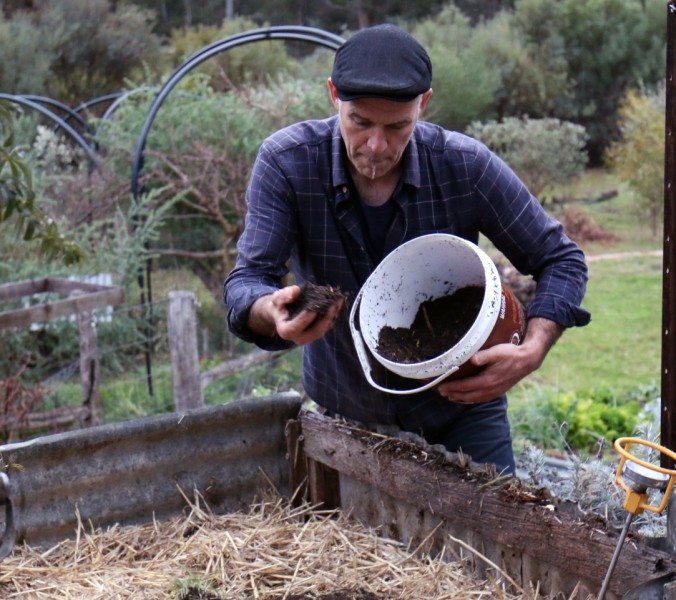When looking back at many early recipes for compost making, I often see soil recommended as an important compost ingredient. Yet, many modern composting resources don’t even mention soil as an ingredient at all, or some even recommend against using it. Despite this, some of my most respected composting sources do recommend the use of clay-rich soil as a compost addition.
So, should we be adding soil to our compost or not? Let’s have a look at soil’s role in our compost piles, if it is required in our compost, and when it might be good to use it.
The biggest fraction of soil is not organic or living material, but comes from minerals or rocks in different states of decomposition; sand (coarse particles), silt (finer particles) and clay (extremely fine particles). Ideal soils (if there is such a thing) have a nice balance of sand, silt and clay, giving what is called good soil ‘structure’ (and never forget the small but magical component that makes those dead minerals into living soil – organic matter!).
Adding these mineral components (sand, silt or clay) to our compost will not give any ‘food’ for our microbes to feed on or to break down. This is the logical reason given for not bothering to add soil to compost, you are not feeding the microbes, so don’t waste your time.
That is true, up to a point. Soil is not an essential ingredient in our compost, and you can still make perfectly good compost without it.
Yet, when I started adding clay-rich soil to my compost (at about 5% starting volume), I observed a noticeable improvement, particularly the finished product. The soil-enriched compost had even more of those beneficial qualities a good compost should have; amazing water-holding capacity, phenomenal soil-structure improvement and that sticky, almost greasy, texture that is associated with a high humic acid content.
So, why would adding soil have resulted in these improvements?
Clay-rich soil (more than sandy or silt-rich soils) have a high ‘cation exchange capacity’ (CEC). Now, I don’t want to get too technical here, but if you send a soil sample off for lab testing, CEC is a pretty good measure of the fertility of a soil, indicating how well a soil can hold on to nutrients, but in a way that plants are able to access.
So, clay-rich soil in a compost is likely to be providing these same qualities, holding on to nutrients that may otherwise be lost from the pile as gases, but also making those nutrients readily available to the biological processes in the compost pile.
The other thing soil adds to a pile is density. Now most of you may be asking why I might be recommending making our compost piles denser when I’m so often reminding folk to add more aerating ingredients to their piles.
When we get past the ‘dump and run’ stinky-bucket-of-food-scraps style of composting, and are already adding lots of balancing carbon-rich sources to our piles, like straw and garden prunings and autumn leaves, we sometime go too far the other way, and make piles that are a bit too light and empty. If this might be you, I’d encourage you to start experimenting with adding clay-rich soil to your compost.
Start with just a sprinkling of soil between layers in our pile, aiming for about 5% of total volume. Five per cent translates to about 1 x 10 litre bucket per 220 litre Gedye-style bin, or 5 x 10 litre buckets in a cubic metre bay, that is sprinkled through the whole bin or pile, so you don’t have to go overboard.
Have an experiment and see what you notice in the composting process and in the finished product. I doubt you will regret it.
– Joel Meadows works with *Yes In My Back Yard, (YIMBY), a community-scale composting initiative in Castlemaine and surrounds. Send questions or comments to hello@yimbycompost.com, or to book in for a compost workshop!








